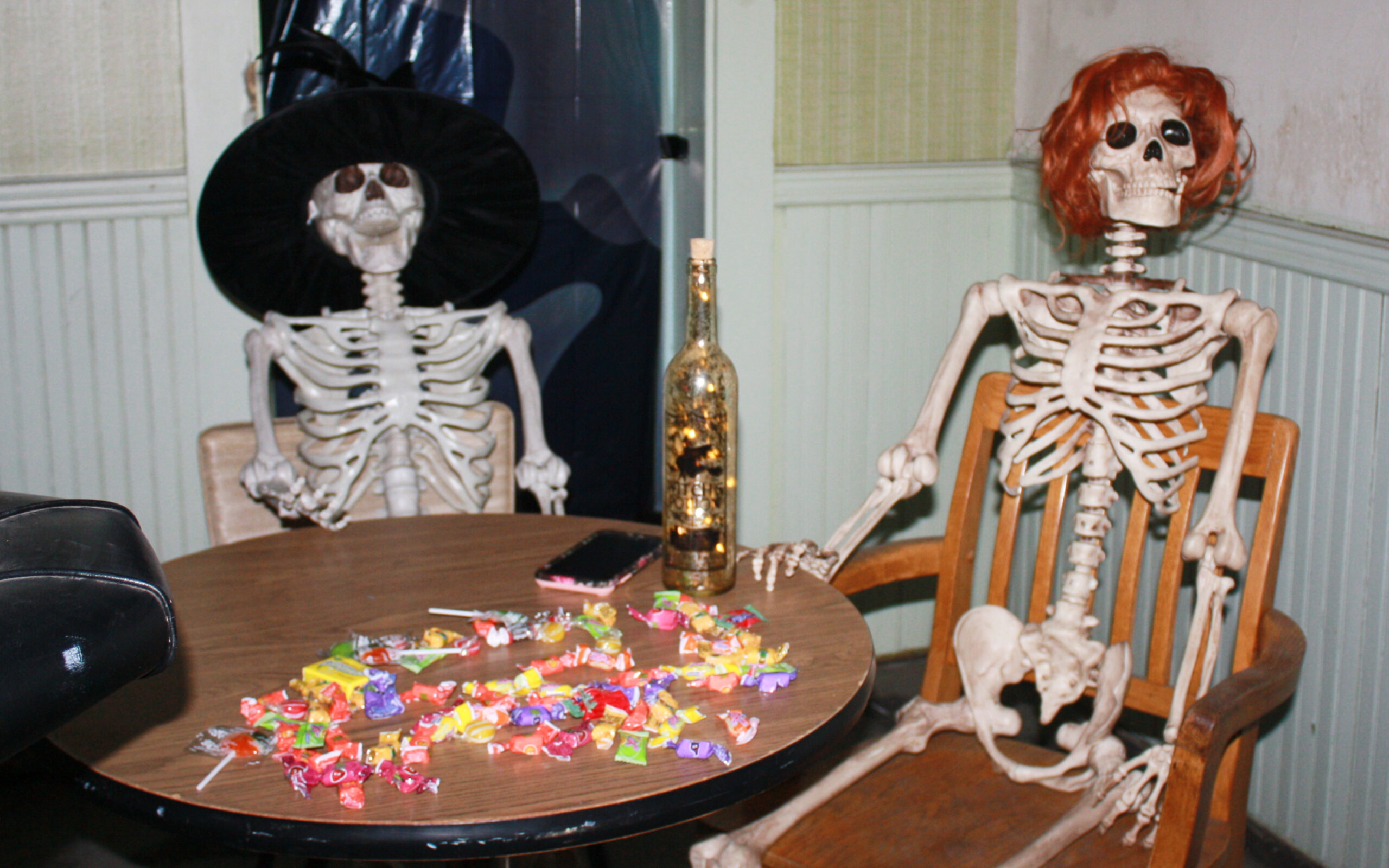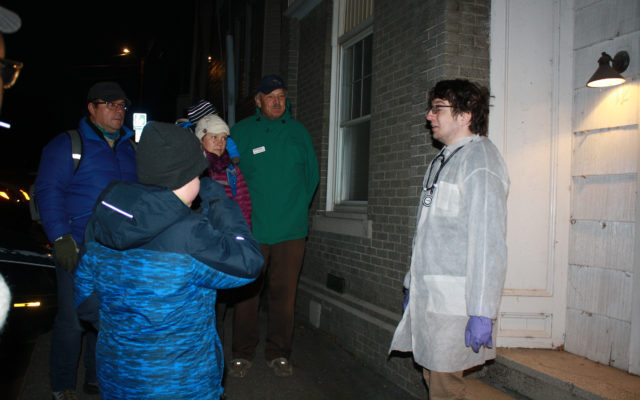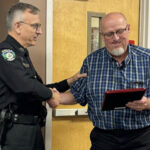
PRESQUE ISLE, Maine — For many Presque Isle area residents it can be easy to pass by the city’s numerous downtown buildings without knowing some of the scary, and true, events that happened throughout history.
Around a dozen brave souls gathered on Oct. 19 for the second set of guided walking tours, known as the Haunted Lantern Tours, hosted by the Presque Isle Historical Society.
The group’s first stop was the historic fire station on Church Street, originally built in 1912. In the early 20th century, the station housed six horse stalls, equipment storage space and a room for firemen on the ground floor and a municipal courtroom, city offices, council chambers and an apartment for the horse caretaker on the second floor.
After municipal offices moved next door to the site of the former hospital in 1960, the Church Street building became the fire and police station until both stations moved to North Street in the early 2000s.
Presque Isle Historical Society member Kim Smith told people on the Haunted Lantern Tour that in 2018 the Maine Paranormal Investigative Society visited the city and found that the former fire station is home to many “ghosts” and “spirits.” She encouraged folks to say hello to “Xavier,” the spirit of a deceased fireman, as they walked downstairs to the ground floor.
“He likes to be acknowledged,” Smith said.

The former fire station on Church Street in Presque Isle had some unusually spooky guests during the Haunted Lantern Tour on Saturday.
(Staff photo/Melissa Lizotte)
But the fire station was not the only site with a creepy history. Tour guide Steve Sweetser introduced “Eugene Doble,” played by volunteer Max Bushman. Doble became one of only three radiologists in the state of Maine in 1900, working from his practice on Church Street in the “Doble Block” across the street from the former fire station.
Unfortunately for Doble, radiologists in his era were not aware of the health effects that can come from prolonged, unprotected exposure to radiation.
“I’m missing three fingers as a result,” said Bushman, as Eugene Doble.
One of the next stops was to the building on Main Street that now houses Northern Lanes Bowling and the Presque Isle Elks Lodge. UMPI history student and historical society volunteer Evan Zarkadas assumed the role of “Billy White,” who opened A.R. White and Sons with his father in the early 1900s.
While the Whites sold furniture, the neighboring business was a funeral parlor in the space that now houses Wintergreen Arts Center on Second Street. Zarkadas noted that many caskets are said to remain in the basement of that building.
“One night a Wintergreen employee heard children playing on the second floor,” he said. “But that could not have been possible because she was the only one in the building.”
- Max Bushman (right) plays “Eugene Doble,” a radiologist who worked in Presque Isle in the early 1900s, during the Presque Isle Historical Society’s Haunted Lantern Tour on Saturday. (Staff photo/Melissa Lizotte)
Perhaps the scariest tale involved Jim Cullen, the man whose death became the only known lynching in New England in the winter of 1873. Guy Landry, dressed as former Sheriff James Phair, told the intriguing story outside Phair’s former residence on Academy Street.
Landry said Cullen was “not a very nice fellow and not a clever one, either.” One day Cullen stole a pair of size 14 shoes from a store in Mapleton owned by David Dudley. The next morning Dudley discovered large tracks leading away from a broken store window. Cullen had put the shoes on and walked off.
Cullen had a local reputation for committing petty crimes and Dudley wasted no time calling the authorities. Phair sent two of his deputies — Granville Hayden and William Hubbard — to follow Cullen’s tracks, and soon they found him staying at the Chapman camp of John Swanback, a man who had often employed him.
Though Hayden and Hubbard told Cullen that he was under arrest, they decided to spend the night at the camp before bringing him to jail. But during the night Swanback and Minot Bird, a young boy who had been staying at the camp, woke up to a horrific sight.
“Jim had taken an ax to the deputies,” Landry said.
Swanback and Bird escaped to Mapleton and a group of around 100 townspeople later took Cullen from Phair, who was transporting him to jail, and hung Cullen from a tree. They buried hijm.
A man claiming to be a university professor later came to town asking if he could dig up Cullen’s head, as he was looking for human skulls to conduct studies on personalities and temperament. A local resident led the professor to where Cullen was buried and the professor claimed the head. Not until much later did people find out that this “professor” was actually a circus sideshow promoter looking for detached human skulls for entertainment purposes.
Many say Cullen’s ghost still haunts the area where he was buried.







